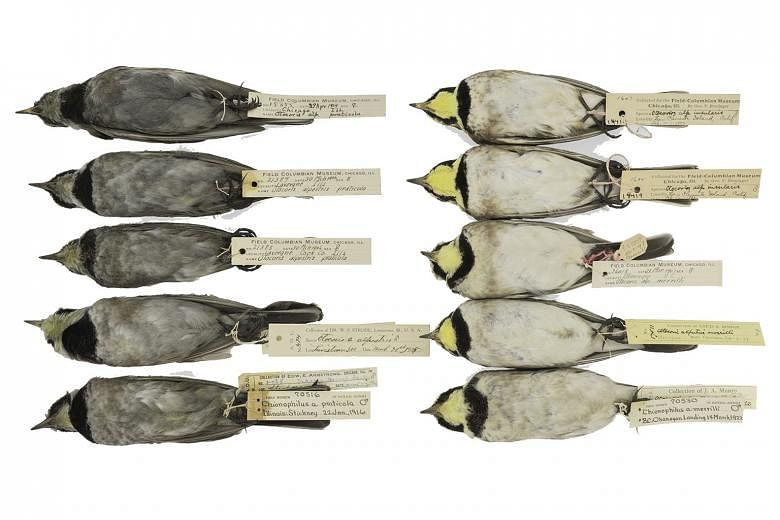Horned Larks are little songbirds with white bellies and yellow chins - at least, now they are. A hundred years ago, at the height of urban smoke pollution in the US, their feathers were stained dark grey by soot in the atmosphere.
A new paper in the Proceedings of the National Academy of Sciences shows that the discolouration of birds in museum collections can be used to trace the amount of black carbon in the air over time and the effects of environmental policy upon pollution.
"The soot on these birds' feathers allowed us to trace the amount of black carbon in the air over time, and we found that the air at the turn of the century was even more polluted than scientists previously thought," said Mr Shane DuBay, a graduate student at The Field Museum and the University of Chicago and one of the authors of the study.
He and co-author Carl Fuldner, also a graduate student at UChicago, analysed more than 1,000 birds collected over the last 135 years to determine and quantify the effects of soot in the air over cities in the Rust Belt.
"If you look at Chicago today, the skies are blue. But when you look at pictures of Beijing and New Delhi, you get a sense for what US cities like Chicago and Pittsburgh were once like," said Mr DuBay. "Using museum collections, we were able to reconstruct that history."
The soot in the air clung to the birds' feathers like dust to a feather duster. "These birds were acting as air filters moving through the environment."
Birds were ideal candidates for the study because they moult and grow a new set of feathers every year, meaning the soot on them had been accumulating only for the past year when they were collected. And there was an apparent trend: old birds were dirtier, and new birds were cleaner.
"We were surprised by the precision we were able to achieve," said Mr DuBay.
"The soot on the birds tracks the use of coal over time. During the Great Depression, there's a sharp drop in black carbon on the birds because coal consumption dropped - once we saw that, it clicked."
The amount of soot on the birds rebounded around World War II, when wartime manufacturing drove up coal use, and dropped off quickly after the war, around when people in the Rust Belt began heating their homes with natural gas piped in from the West rather than with coal.
Analysis of atmospheric black carbon might assist scientists studying climate change. "We know black carbon is a powerful agent of climate change, and at the turn of the century, black carbon levels were worse than previously thought," said Mr DuBay.
"I hope that these results will help climate and atmospheric scientists better understand the effects of black carbon on climate."
"This study shows a tipping point when we moved away from burning dirty coal, and today, we're at a similar pivotal moment with fossil fuels," Mr DuBay added.
FIELD MUSEUM

